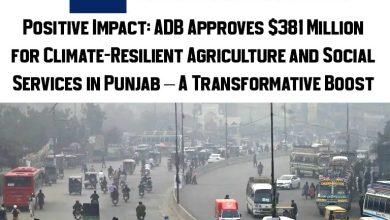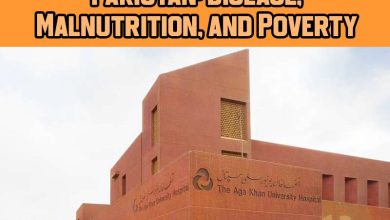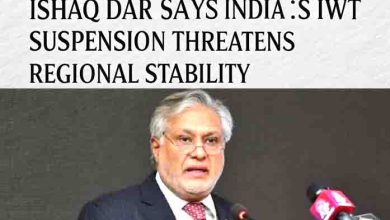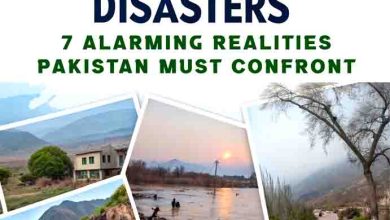World Water Development Report 2025: Glacier Melt Threatens Billions
The UN World Water Development Report 2025 reveals glacier melt threatens freshwater access for over two billion people globally. Are the world's water towers running dry?
The United Nations World Water Development Report 2025 has raised a chilling alarm: rapid glacier melting is endangering the freshwater supply for over two billion people globally. With the theme focused on “Mountains and Glaciers — Water Towers,” the report highlights the grave threat posed to these vital natural reservoirs.
The significance of this year’s report is amplified by the United Nations’ decision to declare 2025 as the “International Year of Glaciers’ Preservation.” This initiative seeks to raise awareness and prompt immediate action to mitigate the devastating impact of glacier melt on the world’s water supply.
But are the world’s water towers running dry? Let’s delve deeper into the findings of the 2025 report and understand the growing crisis threatening the very essence of life on Earth.
What Are The World’s Water Towers?
Mountains and glaciers are often referred to as the world’s water towers. They serve as essential freshwater reservoirs, providing water for billions of people across continents. From the Himalayas to the Andes and the Rockies to the Alps, these frozen giants play a pivotal role in maintaining the hydrological cycle.
According to the report, nearly half of the global population experiences severe water scarcity for at least part of the year. As glaciers continue to melt at alarming rates, this crisis is expected to worsen, jeopardizing not only drinking water but also agriculture, sanitation, and industrial activities.
Key Findings of the World Water Development Report 2025
The 2025 report offers a detailed assessment of how rapidly melting glaciers are reshaping water availability and accessibility worldwide. Some of the key findings include:
- 🌍 Freshwater Supply Threatened: Over two billion people rely on glacier-fed rivers and streams for their freshwater needs.
- 💧 Sanitation Crisis: An estimated 3.5 billion people lack access to safely managed sanitation due to dwindling water resources.
- 🌡️ Climate Change as a Driving Force: Rising global temperatures are accelerating glacier melt at unprecedented rates.
- 📉 Impact on Agriculture: Glacier retreat is threatening irrigation systems essential for food production.
- 🔄 Disrupted Ecosystems: Loss of glacier water is impacting biodiversity and natural habitats.
The findings emphasize the urgency for nations to adopt sustainable water management practices and enhance efforts toward glacier preservation.
The International Year of Glaciers’ Preservation – A Global Call to Action
The UN’s initiative to designate 2025 as the “International Year of Glaciers’ Preservation” is not just symbolic. It is a call for collective action to address a crisis that could redefine the world’s hydrological stability. The initiative aims to:
- Promote awareness about the importance of glaciers and their role in the water cycle.
- Encourage research and technological advancements to monitor and preserve glaciers.
- Foster international cooperation in combating climate change and safeguarding freshwater resources.
Are The World’s Water Towers Running Dry? The Alarming Reality
According to the report, many of the world’s largest glaciers are shrinking faster than anticipated. The Himalayas, often dubbed the “Third Pole,” are particularly vulnerable, with over 1.3 billion people depending on their water systems.
The melting of glaciers has far-reaching implications, including:
- Reduced freshwater availability for drinking and agriculture.
- Increased risk of natural disasters such as floods and landslides.
- Loss of biodiversity and damage to ecosystems reliant on glacier-fed water.
- Economic impacts on industries relying on consistent water supply.
With projections indicating that many glaciers could vanish by the end of the century, the urgency for action cannot be overstated.
What Needs To Be Done? Solutions For A Sustainable Future
Addressing the crisis requires a multi-faceted approach involving governments, international organizations, scientists, and local communities. Recommended actions include:
- 🌱 Implementing Sustainable Water Management Policies: Creating policies that prioritize efficient water use and conservation.
- 🌍 Investing in Glacier Monitoring Technologies: Enhanced research and data collection to predict and manage glacier melt.
- 🔄 Promoting Renewable Energy Solutions: Reducing carbon emissions to slow down global warming.
- 💧 Ensuring Equitable Access to Freshwater: Developing infrastructure to provide clean water and sanitation to underserved populations.
The time to act is now. If left unchecked, glacier melt will continue to threaten global water security, leading to dire consequences for billions of people.
Conclusion
The United Nations World Water Development Report 2025 paints a sobering picture of the state of the world’s glaciers and their role as water towers. As we grapple with the mounting crisis of water scarcity, it is clear that immediate action is essential to prevent irreversible damage.
Internal links: For further reading, explore our articles on Climate Change Impact, Global Water Scarcity Solutions, and Sustainable Water Management Practices.
External links: Learn more about the United Nations’ initiatives for glacier preservation at UN Water.
The future of our planet’s water supply depends on the actions we take today. Will we rise to the challenge?







